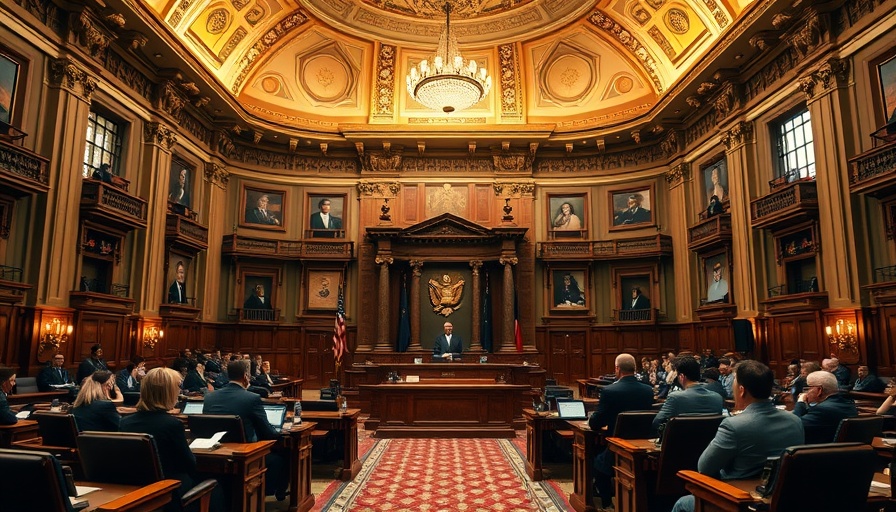
Trump's Tax Bill Takes Center Stage: What You Need to Know
On July 3, 2025, the U.S. House of Representatives achieved a significant milestone in President Donald Trump’s second-term agenda, approving a sweeping tax bill that promises to transform the American financial landscape. With a final vote tally of 218 to 214, the legislation saw support from all Republicans, minus two dissenters, and unified opposition from Democrats, a trend that could foreshadow intense political battles as the implementation process begins.
Celebrating Success Amid Controversy
Following the vote, Trump expressed gratitude to Republican congresspeople, asserting that the bill's passage represents a victory against Democratic opposition fueled by personal disdain. As the president gears up to sign the bill into law, he did so amid a backdrop of celebration in Iowa, where he marked the launch of festivities for the nation's 250th anniversary.
The Financial Toll Explained: Tax Breaks vs. Cuts
At its core, the new tax legislation, which President Trump is fondly referring to as his 'one big beautiful bill,' contains approximately $4.5 trillion in tax breaks from previous legislation, which were on the verge of expiration. It includes provisions aimed at aiding workers, particularly older adults earning less than $75,000, but it is accompanied by significant spending cuts. There are anticipated reductions in Medicaid and food stamp benefits, targeting vulnerable populations by imposing stricter work requirements.
A Bleak Outlook? What Experts Say
Political analysts warn of potential repercussions from the bill, such as an estimated $3.3 trillion addition to the federal deficit and the possibility of 11.8 million more Americans losing health coverage. As the dust settles on this hot-button issue, many are left to ponder the future ramifications of this legislative move on everyday lives in communities like Boston.
What This Means for Bostonians
For residents in Boston and beyond, understanding this legislation is crucial. The sweeping changes to taxes and social safety net programs will affect everything from healthcare availability to local funding for public programs. With every piece of legislation, the impacts trickle down to our neighborhoods, schools, and public services. Awareness and engagement are vital as we navigate these changes, prompting individuals to stay informed and proactive in community discussions.
This pivotal moment in American politics not only shapes the immediate financial landscape but also sets the stage for future elections and policy-making efforts. It’s a reminder of the continuous interplay between legislation and everyday life.
 Add Row
Add Row  Add
Add 




Write A Comment